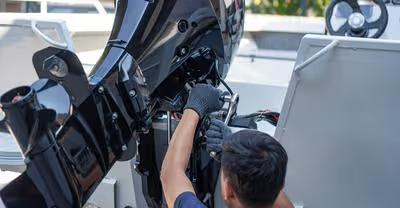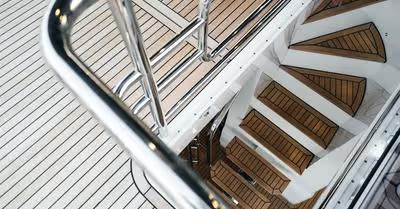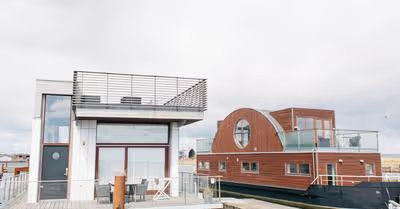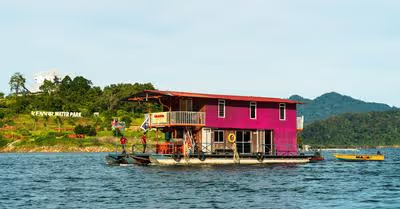
What size motor for a 16 foot fiberglass boat? It’s more complicated than you would think. The right motor is determined by the type of boat and the weight.
You buy a new boat. You need to know what size motor it needs. But you can’t get a straight answer anywhere. There is a lot of different recommended horsepower for a 16 foot fiberglass boat because there is a lot of variability in what size motor a boat like that needs. Even boating experts and enthusiasts don’t always agree on the ideal horsepower range for a boat.
Both a two-stroke and a 4-stroke motor can be suitable for a fiberglass boat, so it comes down to personal preference. As for horsepower, most fishing boat user manuals recommend a motor that has between 40 and 60hp. Jon boats only need 18 to 20hp and sailboats require less than 5hp in a motor.
Since there are several different types of 16 foot fiberglass boats, the best way to determine what size motor is to go off of the type of boat, the weight of the boat, what it will be used for, and the number of passengers, and the length of the boat. Because overpowering or underpowering a boat can cause hull damage, it is very important to choose a motor that is a suitable size for your vessel.
Sources include Game and Fish Magazine, Devlin Designing Boat Builders, Formula Boats, Flat Bottom Boat World, Life of Sailing, Boating Valley, and Healthline.
What Size Motor Should I Get for a 16 Foot Fiberglass Boat?
Boaters have 2 options for motor sizes: a two-stroke or a four-stroke.
In a two-stroke motor, fuel and air are combined in the chamber, and then the exhaust is filtered out. Older two-stroke motors used carburetors to achieve the right mix of fuel and air, but newer models have turned to a computerized Direct Fuel Injection (DFI) for greater efficiency.
In a four-stroke boat motor is very similar to the engine of a car. Because it is more sophisticated and has more moving parts, it has a lubrication system. This means that four-stroke motors require oil changes and more routine maintenance.
Both a two-stroke and a four-stroke motor can be used on a 16 foot fiberglass boat. The best way to choose the size of motor for your boat is to think about what you need out of your motor. For example, a two-stroke is far lighter than a four-stroke, but it is less fuel-efficient. Two-strokes are better for boaters who need to go quickly from one fishing spot to another; this is why most tournament anglers opt for a two-stroke. Anyone with a smaller boat should also go for a two-stroke to ensure that their engine isn’t too heavy for their boat.
Four-stroke boats have better fuel efficiency, so they are ideal for boaters who like to idle. If your marina has a long no-wake zone, a four-stroke will also be better for going a long distance at a slow speed.
What Horsepower Motor is Recommended for a 16 Foot Fiberglass Boat?
While two-stroke vs. four-stroke is a matter of preference, it is very important that boaters get the right horsepower motor for their vessel. Horsepower is the unit of measurement used to express the power in a motor. Unlike miles per hour, horsepower defines the amount of weight and the distance it can be moved in a set period of time.
There are several different types of 16 foot fiberglass boats. The right motor depends on the type of boat and how much horsepower that vessel typically needs.
Best Motor for a 16 Foot Fiberglass Sailboat
Sailboats need smaller motors compared to other types of boats this length. Motors are commonly used to get the sailboat back to the slip or to propel the vessel when the winds die down. Because sailboat motors are primarily used as a backup or a low-speed maneuvering tool, a sailboat motor does not need much horsepower.
The general rule for sailboat motors is that any vessel up to 20 feet long and between 1,000 and 2,000 pounds should have a motor with 1-4hp.
Sailboats that are between 21 feet and 30 feet long, weighing 2,000-10,000 pounds, should have a motor with between 4 and 18 horsepower.
For any sailboat that is more than 30 feet long and weighs more than 10,000 pounds, the owner will need a motor with between 18 and 34 horsepower.
A motor with less than 5 horsepower might not sound like much, but it is powerful enough to do the job for a sailboat. To determine the exact horsepower you need for your sailboat, there is a very easy equation. For every 550 pounds of boat, the motor should have 1 horsepower. For example, a 1,000 pound boat should have a 2 horsepower motor. A 1,500 pound boat should have a 3 horsepower motor.
If you typically have a lot of gear or a large number of guests aboard your boat, it is okay to go up a little on horsepower to ensure that your boat is not underpowered when fully loaded.
How Much Horsepower for a 16 Foot Fiberglass Jon Boat?
A Jon boat is a type of boat that has a flat hull. Because they are designed to not displace water, they are able to easily plane over the surface. This means that Jon boats can get away with smaller motors than other types of fishing boats.
The rule for Jon boats is that boats between 8 feet and 16 feet in length should have 8-20 horsepower motors. Any Jon boat that is over 18 feet long will need a motor in the 20 to 25 horsepower range.
Jon boat experts normally suggest that boaters do a 18-20hp motor for a 16 foot fiberglass Jon boat.
This recommendation is a great place to start for new boaters. However, there is some variability in motor size depending on the brand of the Jon boat and how many passengers it carries. When in doubt, boat owners should consult their boat’s owner’s manual to get the manufacturer recommended horsepower for their specific boat.
What Size Motor Does a 16 Foot Fiberglass Fishing Boat Need?
Fiberglass fishing boats require bigger motors than both Jon boats and sailboats because they are far heavier. When you purchase your boat, the owner’s manual should tell you the best horsepower for your vessel. If you bought it second-hand or can’t find the owner’s manual,there is a simple equation to determine the best motor for your vessel.
Fishing boats use the horsepower-to-weight ratio. For this ratio, a boat should have 1 horsepower for every 25 to 40 pounds of weight, including both the weight of the boat and any passengers you expect to carry.
To calculate this, you should use the displacement weight of your boat instead of the dry weight. Displacement takes into account how the hull sits in the water when it is fully loaded, which is a more accurate weight measurement than how much the boat weighs by itself on dry land.
Here’s an example: the Noddy 16 from Devlin Designing Boat Builders is 16 feet long and has a displacement of 928 pounds. The boat has a maximum loading capacity of 840 pounds. Let’s say that 2 adult men and 2 adult women frequently take their Nobby out on the Puget Sound. The average adult male weighs 197.9 pounds and the average adult female weighs 170.6 pounds. Without factoring in any of their gear, or their beer cooler, that puts the total weight at 1,665 pounds. Based on the horsepower-to-weight ratio, that boat would need a motor with between 42 and 66 horsepower.
This math lines up with the manufacturer recommendation for the Nobby 16, which is a motor with 40 to 60 horsepower. If there were fewer frequent passengers on the boat, then the owner could get away with a 50 horsepower motor.
Why Is it Important to Use the Right Horsepower Motor for a Boat?
If you do not choose a motor with the right horsepower for your boat, your boat may become underpowered or overpowered. Both are dangerous because they can damage your hull and put yourself and your crew in danger.
A boat may be underpowered if:
- The weight of the boat is too heavy for the motor
- The boat was outfitted with a motor that doesn’t have enough horsepower
- The motor is damaged in some way and not performing properly.
If you have an underpowered vessel, you can run the risk of not getting back to land fast enough, which leaves you vulnerable to getting caught in storms or running out of supplies.
If a boat is overpowered, that means it has a motor that is too powerful for the size of the boat. Overpowering can occur if you put a motor recommended for a fishing boat on a sailboat, which is lighter and requires less horsepower. Overpowering causes a boat to go faster, which may be fun at the time, but it can cause costly damage to the hull.










